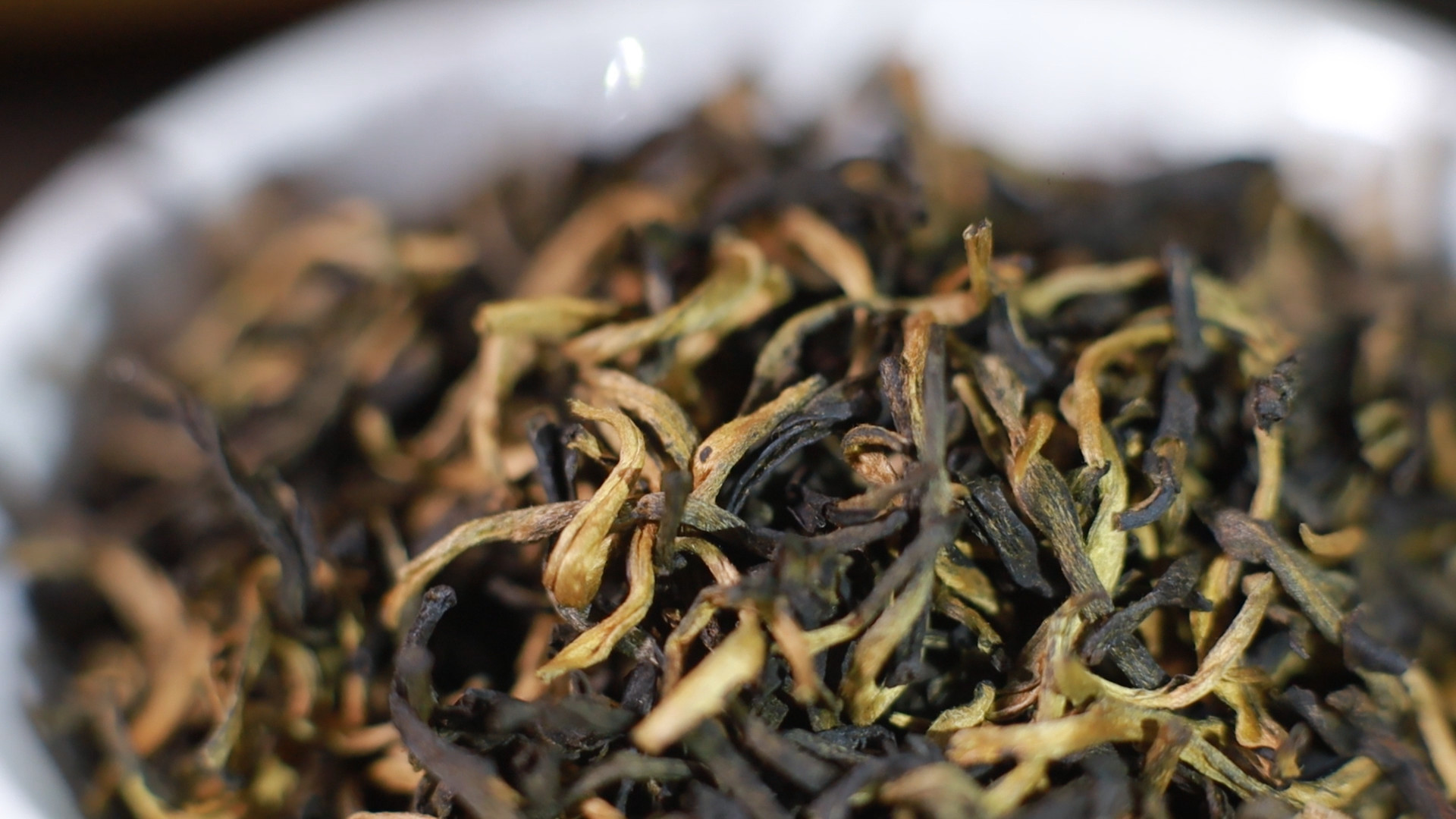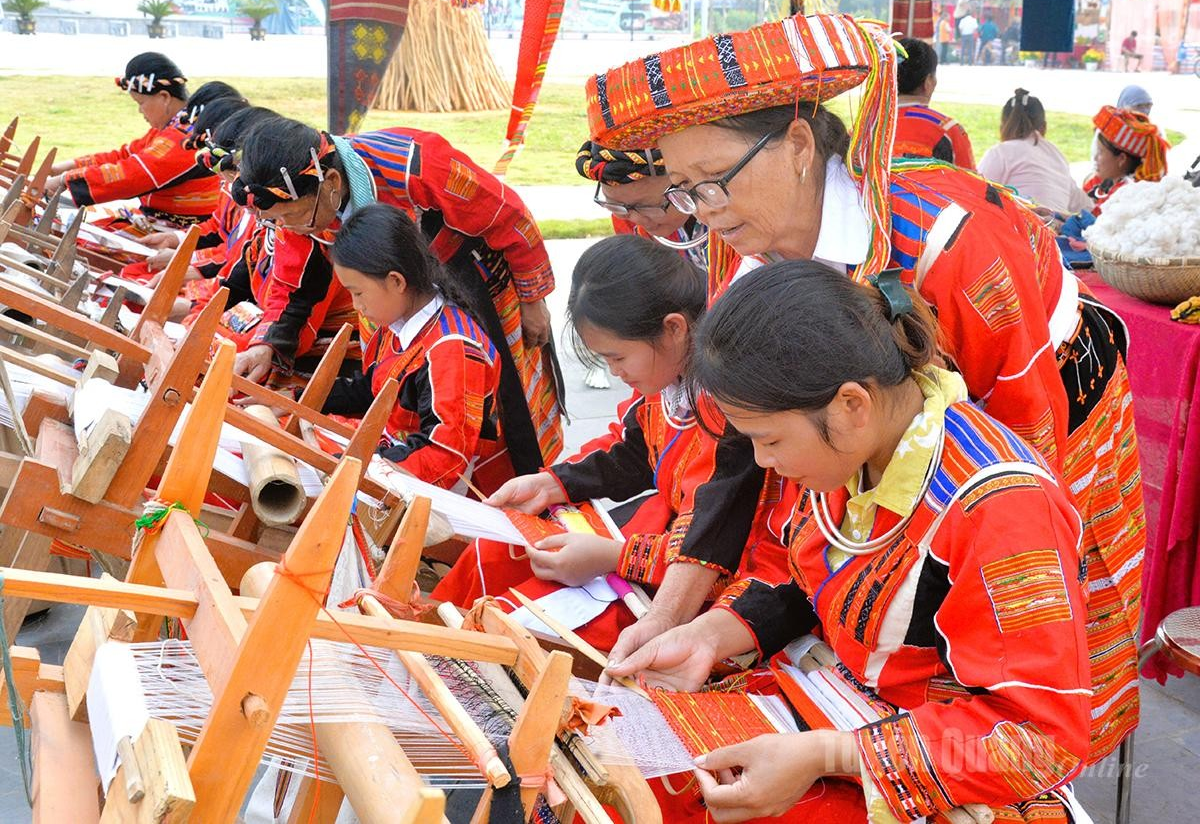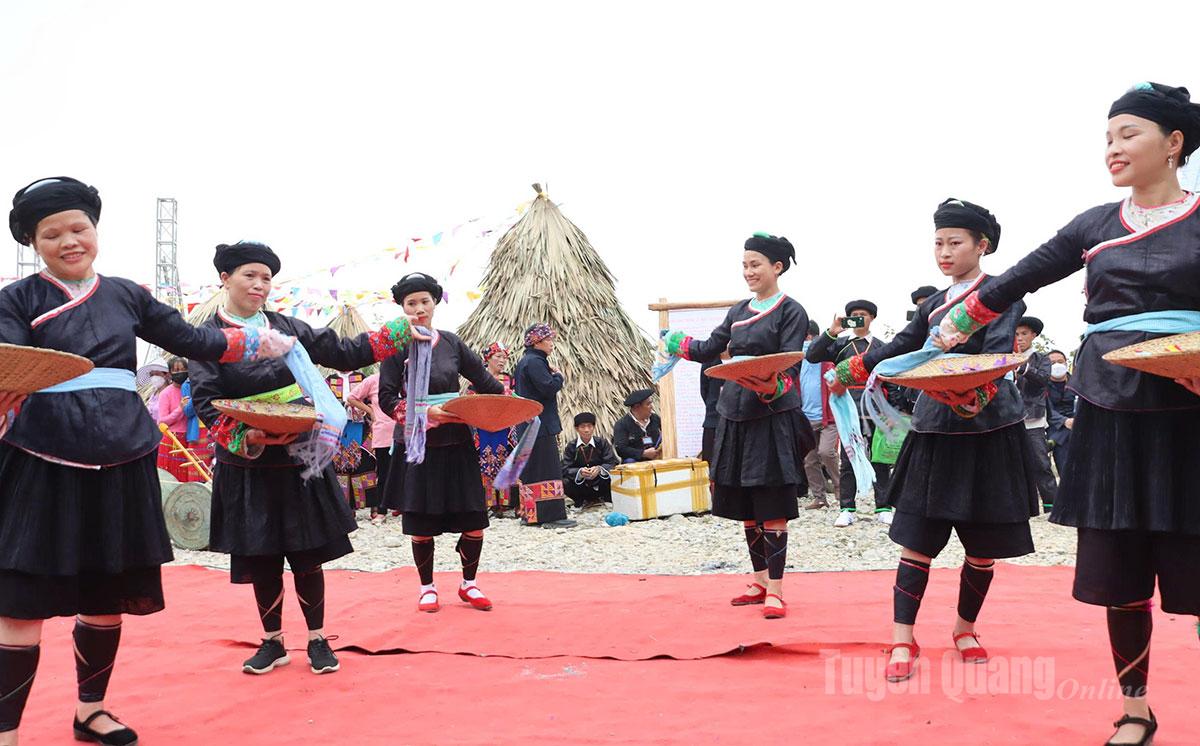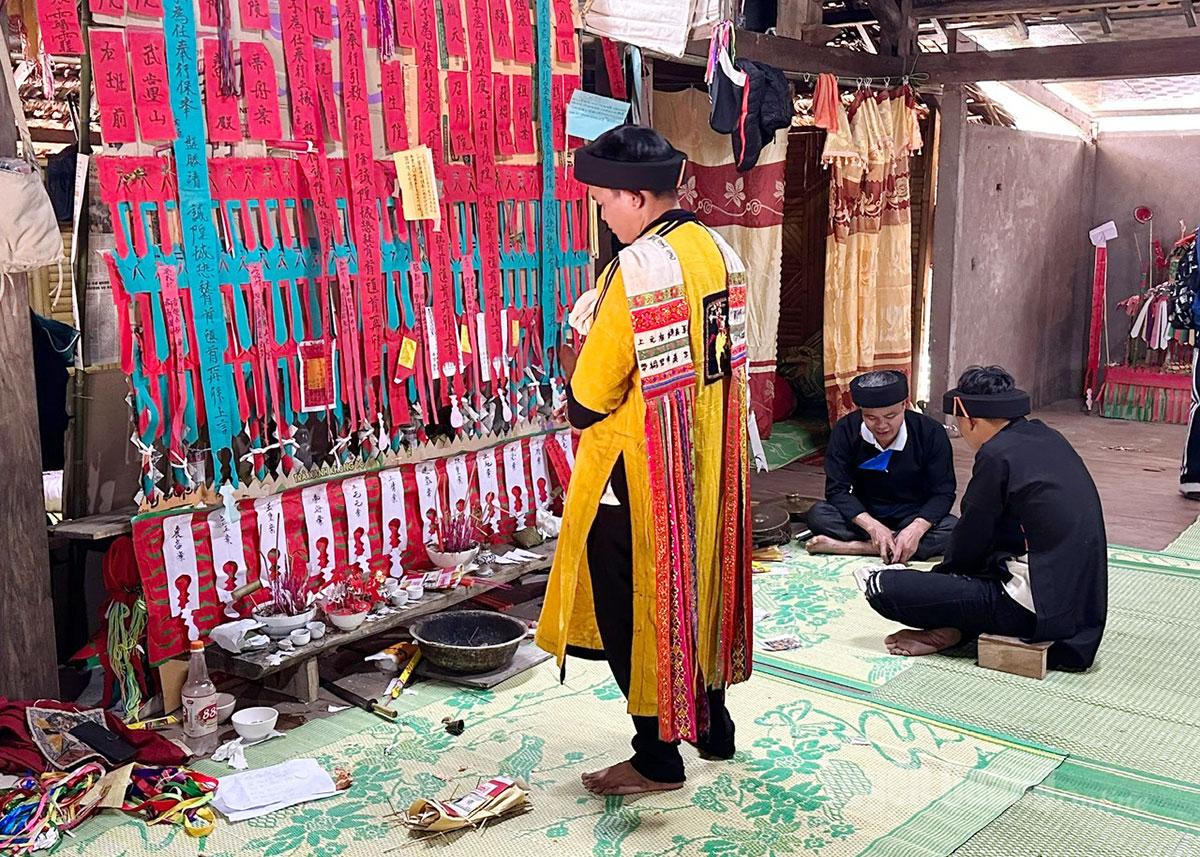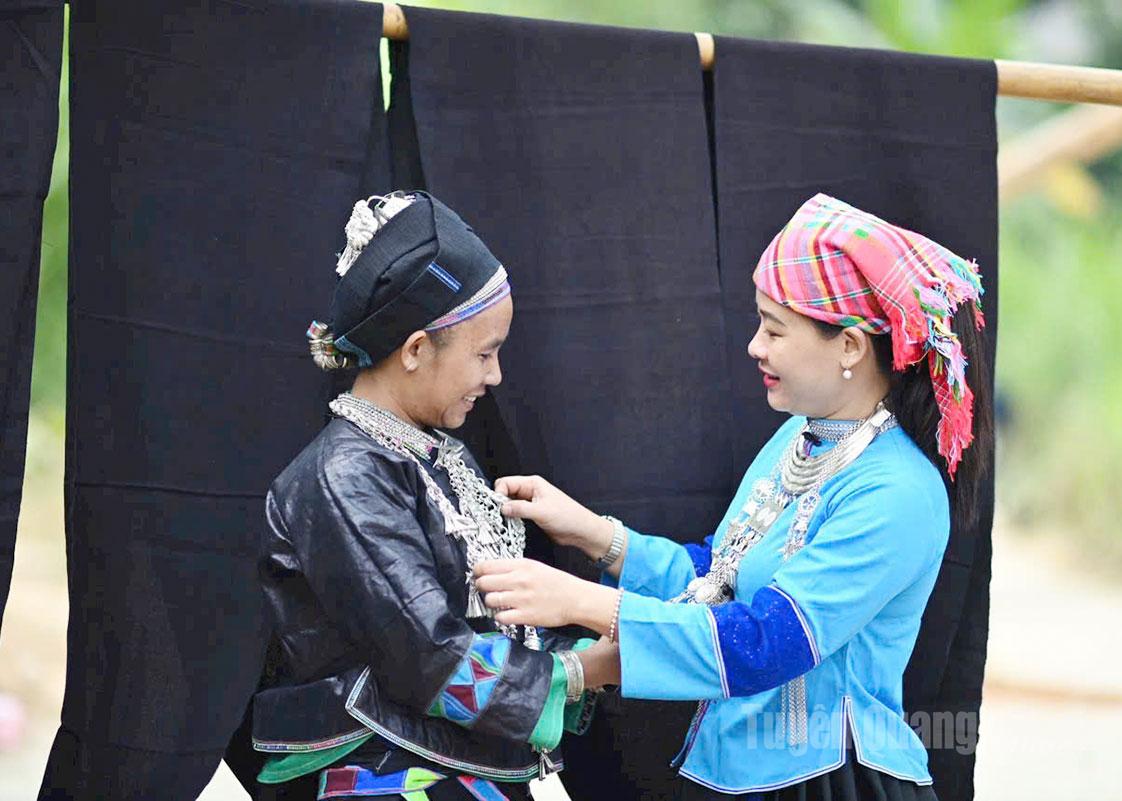
Nung U women often wear their signature black attire, paired with silver jewelry, during Tet and festive occasions.
The Nung U have a long history with many unique customs, but most striking is the attire of their women. Unlike the bright, ornate costumes of some other ethnic groups, Nung U women’s clothing is simple and understated, featuring the deep, contemplative tones of indigo.
Their short, wide blouse reaches just to the waist, fastened with silver buttons at the chest. The collar, cuffs, and hem are edged with strips of blue or white fabric, sometimes accented with contrasting stitches - subtle yet eye-catching. The ankle-length skirt is neatly pleated; when worn, it is wrapped to the back and secured at the waist. While working in the fields, women tuck one corner of the skirt behind them, a style that is both modest and graceful.
Accompanying the skirt is a five-panel indigo blouse, short enough to cover the hips and loose-fitting for ease while farming. The sleeves and chest area are often overlaid with black fabric for a refined contrast. On festive occasions and weddings, Nung U women wear the traditional headscarf and adorn themselves with silver jewelry such as necklaces, bracelets, and hairpins - not only for beauty, but also as symbolic charms entrusted to the protection of the spirits.
“The indigo plant holds a vital place in the lives of the Nung U people. Young girls grow up alongside indigo fields, learning to plant, harvest, ferment the leaves, stir the indigo liquid with lime, and filter out the vivid emerald essence. From these jars of indigo, white cotton fabric slowly absorbs the deep blue-black hue, then is sun-dried, polished with smooth pebbles or rounded wooden blocks, making the fibers glossy, soft, durable, and achieving the characteristic lustrous black.” – Said Mrs. Vang Thi Phuong, Thong Nhat hamlet, Nam Dan commune.
Today, Nam Dan still retains its traditional stilt houses with tiled roofs, nestled by cool mountain streams. In the late afternoon light, women return from the forest with baskets of brown yam roots - an additive that helps indigo cling more firmly and ensures an even color - ready for the next dyeing batch. Locals still maintain the craft of indigo dyeing, sewing costumes, and producing handicrafts for visitors. The craft is passed down to younger generations, each needle and thread carrying stories of the village.
Beyond preservation, the Nung U of Nam Dan now view their indigo costumes as a cultural link for community-based tourism. Visitors come not only to admire the ancient stone slabs with mysterious carvings or the unspoiled mountain scenery, but also to experience picking indigo leaves, fermenting the dye, coloring fabric, sewing garments, and embroidering scarves. Each indigo piece they take home becomes both a keepsake and a fragment of Nung U cultural heritage.
In an era of integration, when many upland villages have lost their traditional crafts, the Nung U of Nam Dan still guard their indigo as they guard their roots. Each pleat of the skirt, each garment, each headscarf still carries the scent of the mountains and forests - a soul and identity passed from generation to generation.
Nguyen Thanh Hieu
Vietnamese data source: Bao Tuyen Quang

